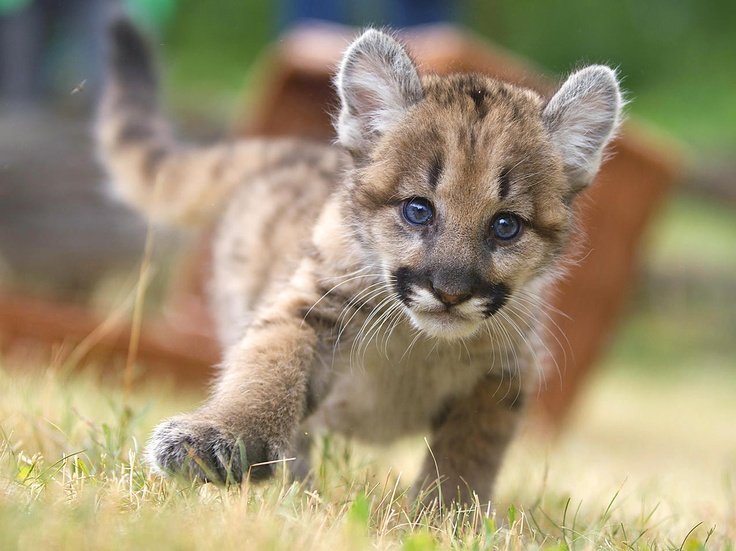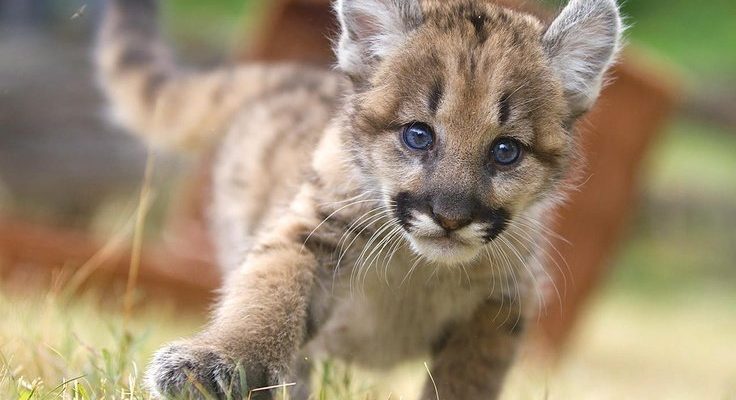
Pumas, primarily found in the Americas, have a unique approach to raising their young. The bond between a mother and her cubs is strong and filled with subtle lessons about survival. When a mother puma gives birth, she embraces her role with instinctual care, raising her little ones in secluded spots amid the wild. Think of it like setting up a home base in a treacherous game where stealth and smarts are essential for success. So, let’s explore how these incredible cats nurture their offspring until they are ready to face the wilderness on their own.
The Birth and Early Days of Puma Cubs
When a female puma is ready to give birth, she typically looks for a safe den site, often concealed by thick brush or rocky outcrops. This breeding season usually occurs in the spring, aligning with a time when food is abundant. After a gestation period of about 90 to 95 days, she can have a litter of one to six cubs. Picture each tiny cub, eyes still closed and vulnerable, relying entirely on their mother’s protection and care.
Once born, these cubs are completely dependent on their mother for food. The mother will nurse them for about two to three months, ensuring they receive the vital nutrients they need to grow. During this time, she remains highly protective, hardly leaving the den. You might be wondering how she manages to feed herself while caring for her little ones. Well, she has to hunt frequently but will only return to the den when it’s safe to do so, limiting her time away to keep her cubs safe.
After about two weeks, the cubs begin to open their eyes. This is a pivotal moment, marking the start of their journey towards exploring the world. But they still need their mother for guidance. She plays a crucial role in teaching them the skills they will need to survive once they leave the den.
Teaching Cubs Essential Survival Skills
As the weeks pass, the mother puma gradually introduces her cubs to the outside world. They often start venturing out of the den after about six weeks, following their mother closely and imitating her behavior. Here’s the thing: teaching them to hunt isn’t just about showing them how to catch prey; it involves lessons in stealth, patience, and timing.
When they’re around 10 weeks old, the mother will start bringing small prey back to the den. She teaches her cubs to playfully chase and pounce on these smaller animals, helping them hone their skills. This playful behavior is more than just fun; it’s a critical training ground for their future as hunters. Imagine them leaping through the underbrush, practicing their pouncing techniques as the mother observes and encourages them.
However, she also knows that there’s a danger of attracting attention from larger predators. So, she often varies her hunting patterns and den locations to keep her family safe. It’s a real balancing act, one that requires her to be one step ahead at all times.
The Role of the Mother in Their Development
The relationship between a mother puma and her cubs is filled with nurturing and vigilance. She not only provides shelter and food but also emotional support. You might think of her as both a coach and a protective parent rolled into one.
Mothers are known to be very attentive and nurturing, grooming their cubs to strengthen their bond. This grooming also serves practical purposes, like keeping their coats clean and reducing scents that could attract predators. The cubs learn a lot simply by watching their mother, from how to navigate the terrain to understanding how to approach potential prey.
Interestingly, the mother puma often communicates with her young through body language and subtle vocalizations. Whether it’s a soft call to gather them or a warning growl to keep them alert, she uses these sounds to guide them through their environment. Just like a coach during a critical game, she knows when to encourage and when to warn.
Independence: A Gradual Process
As the cubs grow, usually around six months of age, they start to explore the world more independently. This is a critical time in their lives when they learn to fend for themselves. By this age, they’ve had a solid foundation in hunting skills, but they still have a lot to learn.
The mother will continue to provide for them but starts to spend more time away. This gradual separation is essential for encouraging independence. Here’s where it gets tricky: the cubs must learn to adapt to their surroundings and become proficient hunters themselves. Sometimes, this means a bit of trial and error.
During this phase, you might see older cubs playfully fighting over scraps of food, developing their skills while simultaneously engaging in sibling rivalry. It’s a natural way for them to test their strengths and learn from one another. Their mother watches from a distance, ready to intervene if things get too rough.
When to Leave the Nest
Eventually, the time comes for the cubs to strike out on their own. This typically happens around 1.5 to 2 years of age. By this point, they’ve learned how to hunt, navigate their territory, and avoid dangers. The mother may still provide assistance occasionally, but the cubs must now face the wild without her guidance.
You might be thinking, “Isn’t that a tough transition?” It certainly can be. Leaving the safety of their mother is a big step, akin to going off to college. They need to find their own territory, which means discovering new sources of food and avoiding other predators or territorial pumas.
But this independence is crucial. It allows the young pumas to establish their own places in the ecosystem. They’ll carry on the cycle of life, just as their mother did before them.
The Challenges of Parenting in the Wild
Raising cubs in the wild isn’t all sunshine and playful antics; it comes with its fair share of challenges. The mother has to constantly be alert to threats, not only from other predators but also from humans encroaching on their territory. Habitat loss and hunting can make it extremely difficult for her to find food and secure a safe space for her young.
Moreover, she often faces tough choices about when to move her cubs if she senses danger. If a predator is nearby or food is scarce, she might need to relocate, leaving everything behind for their safety. This instinctual drive to protect her offspring exemplifies the deep bond they share.
Dangers are everywhere in the wild, from rival pumas competing for territory to vehicles on busy roads. Each of these challenges underscores the incredible strength and resilience of both the mother and her cubs.
The journey of pumas raising their young is nothing short of extraordinary. From the moment they’re born, every aspect of their upbringing is about survival. The mother’s role is pivotal; she nurtures, teaches, and, ultimately, prepares her cubs to face the wild on their own.
It’s a process that mirrors life in many ways—filled with lessons, independence, and the constant push to grow. As these young pumas step out into the wild, they carry with them the skills and experiences imparted by their mother. And just like that, the cycle of life continues, showcasing the beauty and complexity of nature’s parenting. Whether in the heart of a forest or on the rocky cliffs of a mountain, the legacy of the puma lives on through its young, ready to embrace the wild world ahead.

